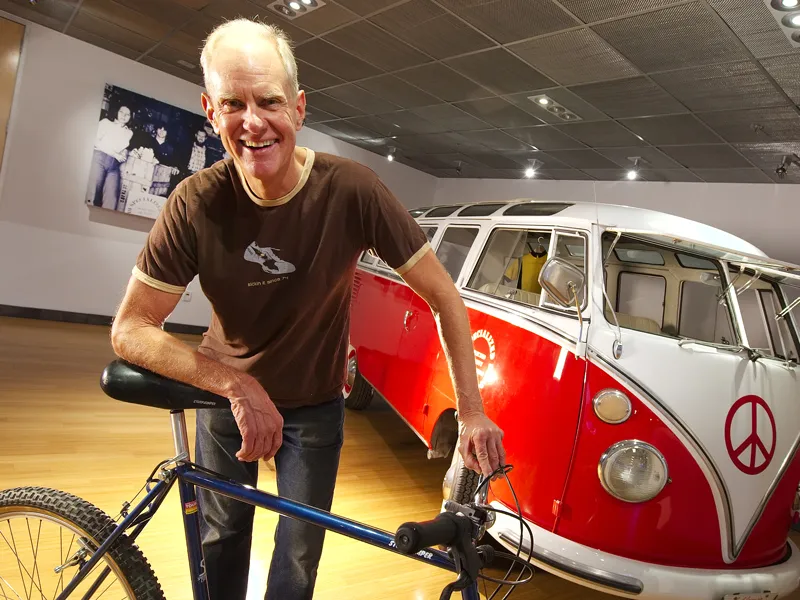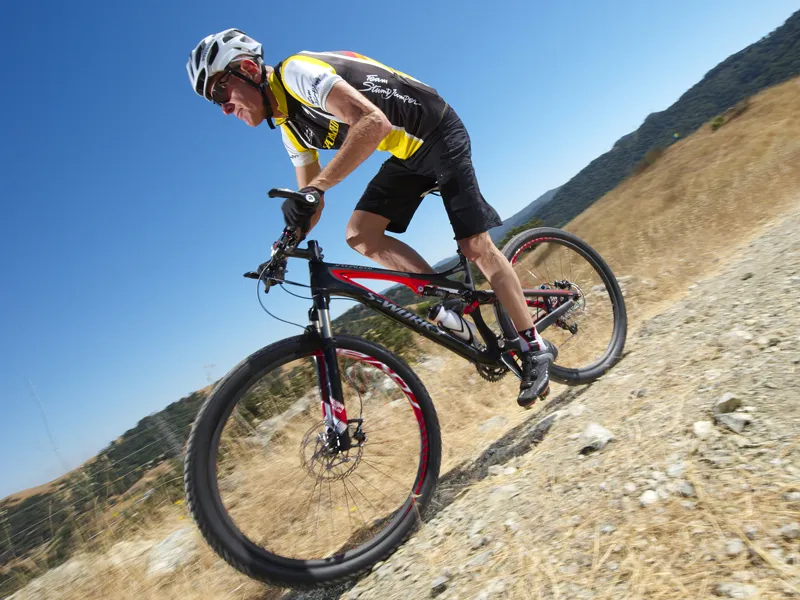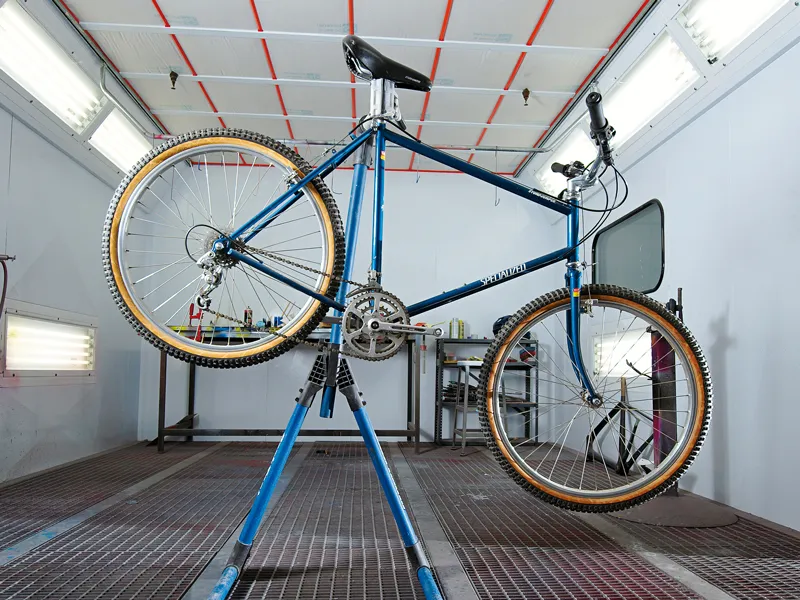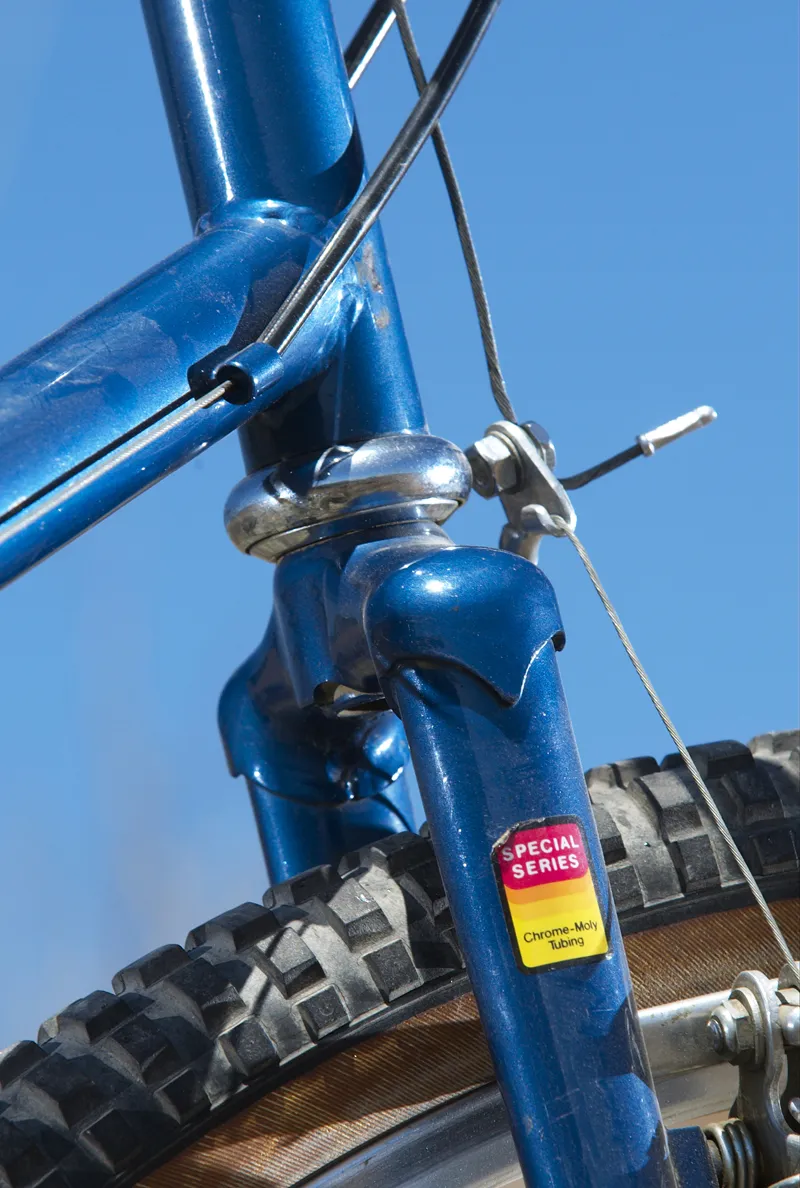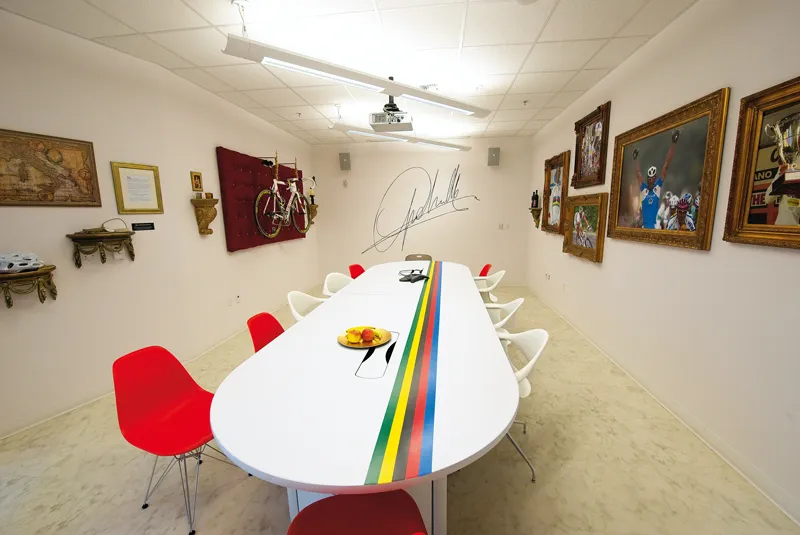Nine o'clock on a Friday morning is coffee and doughnuts time, a weekly ritual that sees staff flocking to two large rooms in a corner of Specialized’s sprawling global HQ, situated a couple of hours from San Francisco, for a caffeine and sugar-fuelled boost to the day.
Moving freely among the throngs of tanned, fit employees exchanging news and gossip is a tall, sinewy man with greying hair and the toned calf muscles of a lifelong cyclist. Pausing to chat to people along the way, his relaxed manner gives no hint to his position.
This is Mike Sinyard, founder and owner of Specialized, one of the founding fathers of mountain biking and a man at the helm of a bicycle company that now measures its annual turnover in eight figures. Many people have played a role in mountain biking’s history, but few can claim to have influenced the sport as profoundly as Mike Sinyard has done.
By producing the Stumpjumper in 1981, the fledgling Specialized Bicycle Components introduced the world to the very first production mountain bike. Suddenly riding off-road was a whole chunk more affordable – and the course of cycling history was altered.
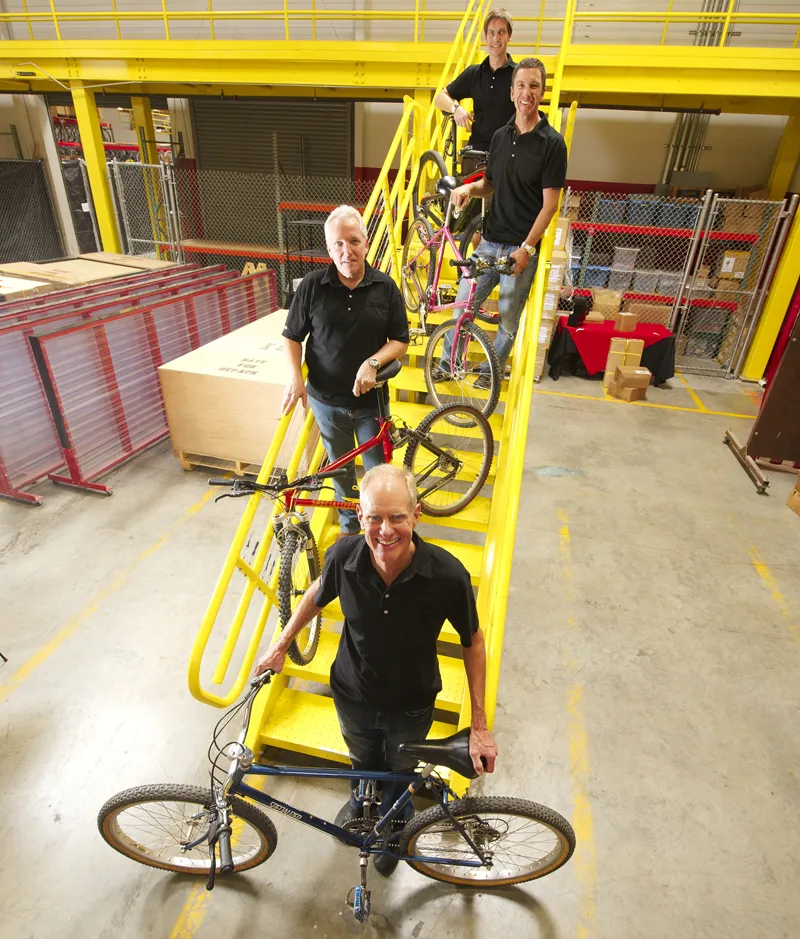
There’s little sense of hierarchy at Specialized HQ and everyone is united by a shared love of bikes
Road tripping
Mike had an early introduction to the joys of cycling, courtesy of his father. “My dad was a machinist,” he explains, “so we’d buy bikes at flea markets, paint ’em up and sell them on. I did that at college, built up bikes for people and sold them. I was getting a business degree and couldn’t imagine sitting in an office all day,” he laughs, “so I always hoped to do something like that but didn’t know how to do it.”
It was really hard to get good quality bike spares in US bike shops in the 1970s. So Mike sold his treasured Volkswagen bus for $1,500 and took his bike to Europe in search of components. After having the time of his life living in Amsterdam (“well, it was the Seventies,” he says by way of explanation), Mike rode down to Barcelona and then on to Italy, where fate intervened in the form of a chance meeting with a Swiss woman who happened to have contacts in the Italian cycling industry.
“I met Cino Cinelli,” [founder of Cinelli Bicycles] explains Mike. “I said ‘this is it, this is the place – buy the parts and go home’.” Which is exactly what he did. With the remainder – over $1,000 – of his travel money spent on high-end Italian bicycle artistry, Sinyard returned to California and spent his time riding between bike shops, persuading them to buy his components. The year was 1974, and Specialized Bicycle Components was born.
The component sales went so well that it wasn’t long before Specialized were venturing into manufacturing. Mike realised the expensive tubular road tyres that were the choice of the European cycling cognoscenti simply weren’t the right choice for ordinary riders like himself, but the alternatives were poor quality. So, in a move that would set the precedent for the entire industry, he looked to the Far East and began producing his own tyres there.
The Stumpy is born
By 1979 Specialized were building their first road bikes in Japan. Mountain biking as we know it was barely a glimmer in a dungaree-wearing, klunker-riding rebel’s eye. But Mike had established a reputation with California’s frame builders – including the forward-thinking Tom Ritchey, who produced some of the very earliest purpose-built mountain bike frames.
Although these expensive and still relatively rare beasts were widely regarded as a fad, Mike saw their potential. “We had a guy called Tim Neenan working here at the time,” he explains. “Tim told me ‘I can make a better mountain bike’ and drew up the designs – life-size drawings – with all the tubing specs. Our concept was to make a bike on a production basis but as though it was a custom bike.”

The bike that started it all in 1981: the Specialized Stumpjumper
In 1981 the first Stumpjumper rolled off the Japanese production lines followed, over the next 12 months, by around 500 more. It was a defining moment in mountain biking’s history but, as with many pivotal events, that clarity comes with hindsight. Mike reflects: “Five hundred bikes in some ways is a lot of bikes and in other ways isn’t. Did it sell out just like that? No, a lot of people didn’t understand it. A lot of my customers who bought Cinelli stems asked me what I was doing with a big kid’s BMX.”
The Stumpjumper’s key selling points were that it was both relatively widely available and, at just $750 for the complete bike or $395 for the frame, relatively affordable. The reception from early custom frame builders wasn’t entirely friendly – some of them disparagingly nicknamed it the ‘Skunkjunker’. But Mike realised that Specialized weren’t just selling a bike, they were selling a concept too.
Early ads capitalised on the idea that the Stumpjumper’s versatility heralded the beginning of a new sport – one that could be enjoyed by anyone with the cash to buy the bike. As if to emphasise the ‘everyman’ appeal, Tim Neenan appeared in the ad dressed in the dungarees and gardening gloves he used to go riding. Mountain biking didn’t have a uniform back then because the Stumpjumper was ground zero.
Hearing Mike relate a story he must have told countless times over the years, it’s obvious that the business mind that has made Specialized such a success plays second fiddle to the cyclist that lurks within. Cycling runs through the Sinyard veins and infuses the company he founded, to the extent that the global HQ offices are notably empty at lunchtimes as most employees go out for a ride.
The day after we speak Mike is heading north with his son to ride the Leadville 100, a gruelling high-altitude enduro event that regularly reduces good riders to shrivelled husks. But although he’s clearly extremely fit and encourages his employees to look after themselves, he insists he’s not an athlete. “I’m always the advocate for the average rider,” he tells me, “because that’s who I am. I’m not some racer. Never have been."
“I like road riding as well, but I tell you… when you have a nice place to ride a mountain bike there’s nothing like that feeling, when you feel like you’re really out there. In the UK you have good riding,” smiles Mike, “except for that damn mud!”
Despite his company’s many firsts in cycling manufacturing – not least the Stumpjumper – Mike Sinyard comes across as more of an advocate for cycling, the lifestyle, than a salesman for Specialized, the brand. He laughs when I point this out. “Well, that’s part of it, right?” he says. “For sure I’m proud of the Stumpjumper, but the sustainable part is the people involved in riding.” He pauses before adding: “I think cycling is the cure for a lot of things in this world.”
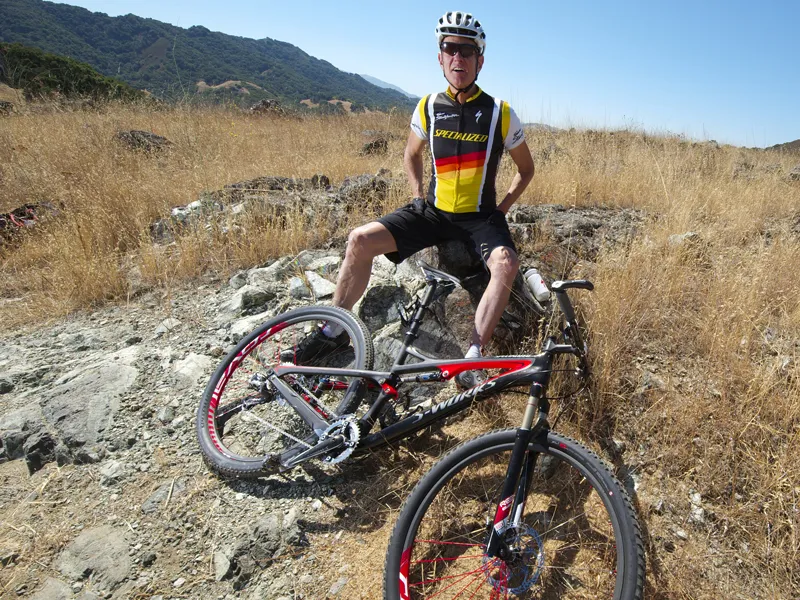
Mike may head up a huge corporation but he still gets out on his bike regularly
Timeline: A brief history of Specialized
- 1974: Mike Sinyard sells his VW bus for $1,500 and, via a detour to Europe, founds Specialized Bicycle Components.
- 1976: Specialized begin manufacturing their own tyres.
- 1979: Specialized produce the Allez road bike in Japan.
- 1981: The first Stumpjumper is produced and a whole new sport is born.
- 1989: The Epic arrives: the world’s first production carbon fibre mountain bike.
- 1990: The end of the Cold War allows Specialized to use advanced metal matrix composites in their bicycle frame production.
- 1993: Specialized’s first suspension bike, the S-Works FSR, introduces the basic system that all the company’s full-sussers have since used.
- 1999: The S-Works FSR XC brings full suspension to the cross-country racing crowd.
- 2003: Intelligent shock technology is introduced in the form of the S-Works Epic’s Brain.
- 2011: 29in wheels hit the big time, rolling out across the Specialized range.
Anatomy of a game-changer: The 1981 Stumpjumper
Frame: Although Specialized believed that lugged and brazed frame construction was a better option than TIG welding, the lugs for the geometry and tubes that Stumpjumper designer Tim Neenan wanted to use simply didn’t exist, so early Stumpjumpers were welded. Later versions reverted to lugs, just like Specialized’s production road frames.

Bar and stem: When you’re designing a whole new category of bike you don’t have much in the way of components to choose from. So Specialized went with a modified version of an existing BMX stem and based the steel handlebar on a motorcycle handlebar manufactured by Magura.

Gears: With no indexing and just five sprockets ranging from 14 to 28 teeth, the Suntour ARX GT gears – designed, like many of the Stumpjumper’s components, for road use – were crude but functional.
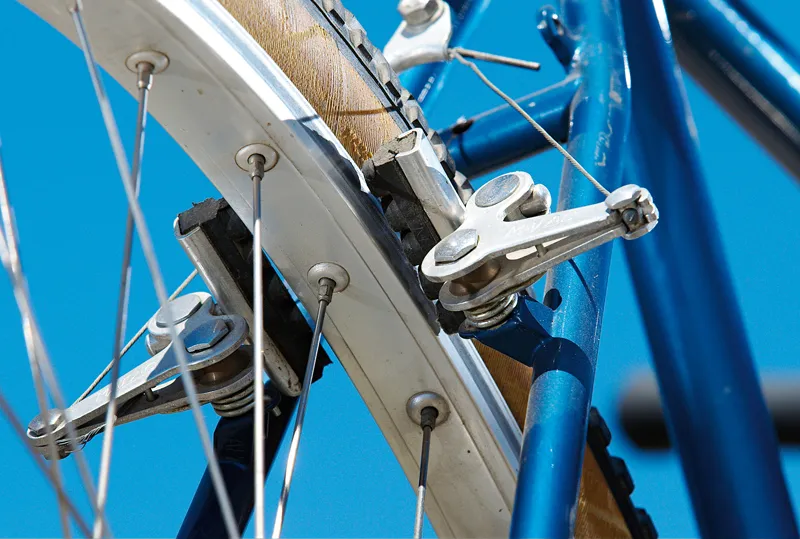
Brakes: Demonstrating the crossover between bicycles and motorbikes, the Stumpjumper’s brakes relied on Mafac cantilevers purloined from the touring world, mated with Tomaselli Racer brake levers that were designed for use on café-racer motorcycles.
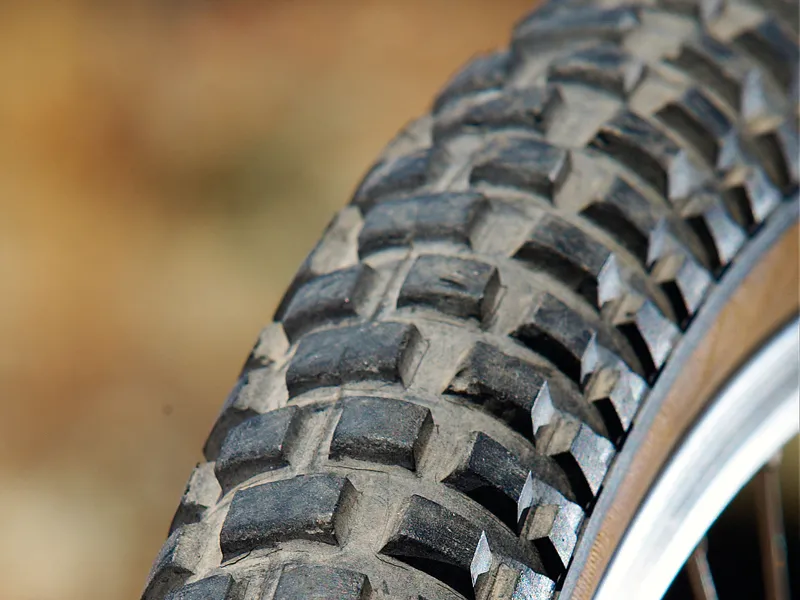
Tyres: The Stumpjumper boasted an eponymous tyre that capitalised on the know-how already gained from Specialized producing its own line of road tyres. An open block tread pattern paved the way for a long line of imitators.
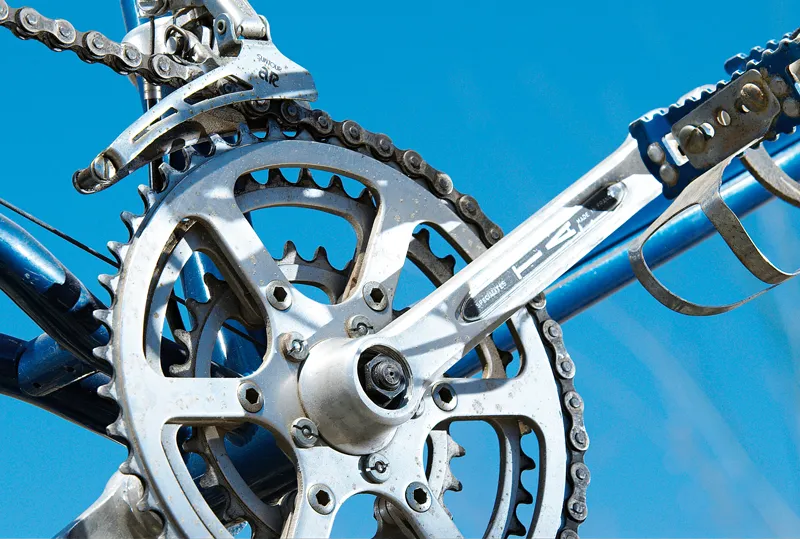
Chainset: Built for use on touring bikes, the TA Cyclotourist chainset gave the Stumpjumper the gear range it needed for off-road use, but not the durability. Never intended for extended abuse away from tarmac, failures were relatively common.

